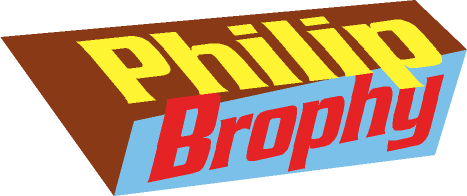Art, Sex & Psychos
With research assistance from the George Mora Fellowship & Culture France, 2010;Art Gallery of New South Wales Paris Studio residency, 2012;
& Cité internationale des Artes, Paris studio residency, 2016.
First presented as slide lectures for Parallel Collisions - 12th Adelaide Biennale of Australian Art, Adelaide, 2011;
& for the Colour Me Dead exhibition - Ian Potter Museum of Art, Melbourne, 2013
Snapshot
How did we shift from epochs wherein artists painted nudes above all else, to an era where hardly any artists bother painting nudes? Is the death of the nude in art the ultimate triumph of Modernism? If art becomes progressively Humanist across time, why does it also become increasingly violent in its formal techniques? Can art depict violence without sexualising it? Is artistic creativity merely symptomatic of obsession, compulsion and delusions? Might paintings best convey psychotic interior worlds despite being mandated to express the social outside world? Is there a way to write from being inside a painting rather than treating it as a window onto the world? Colour Me Dead looks intensely at paintings and sculptures which prompt these questions. What it sees, it writes.
Introduction & Conclusion @ 3,000 words
18 chapters @ 13,000 words
Total = 240,000 words
Categories: art, painting, sculpture, photography, history.
Or: Symbolism, sexuality, psychosis, violence, body.
Pitch
How did we shift from epochs wherein artists painted nudes above all else, to an era where hardly any artists bother painting nudes? Is the death of the nude in art the ultimate triumph of Modernism? If art becomes progressively Humanist across time, why does it also become increasingly violent in its formal techniques? Can art depict violence without sexualising it? Is artistic creativity merely symptomatic of obsession, compulsion and delusions? Might paintings best convey psychotic interior worlds despite being mandated to express the social outside world? Is there a way to write from being inside a painting rather than treating it as a window onto the world? Colour Me Dead looks intensely at paintings and sculptures which prompt these questions. What it sees, it writes.To the casual viewer, all artists are 'mad' to some degree. This is a view still propagated by populist representations and discussions of artists and the kind of things they do and produce. To art theoreticians, critics and historians, that same 'madness' is a railroaded synonym for passion, expression, individuality, compulsion. The degree of madness, craziness, stupidity or wackiness of artists will rise or fall depending on which perspective is applied to their endeavours. Since the mid-20th century and its dominance of modernist thought in art, the lines have become blurred between generalist denigrations of artistic radicalism and elitist promotion of artistic identities. Now, many artists invoke or feign madness through ironic theatricality or manipulative stunts; both mass media and serious critics extol tales of clinical and tragic madness in artists; historians and amateurs uncover original visionaries in 'outsider' artists otherwise legally declared insane; and all sorts of aberrant behaviour are posited as rebellious expressions of the creative Self. All in all, there seems to be a magnetic pull between artistic 'rule-breaking' and societal 'law-breaking'.
But such clichés and stereotypes divert our attention from precisely how artists who break from conventions in artistic norm mirror non-artists who similarly break from conventions in social behaviour. The raging lunatic, the psychotic murderer, the serial rapist, the pornography addict, even the nominal sufferer of autism, aspergers or obsessive-compulsive behaviour - all these figures find their actions symbolically played out by artists from across the last three centuries. Sometimes artists seem to forecast states and syndromes of psychological disorder; other times they appear to mimic or quote such conditions. Despite this chicken-or-egg situation, clear trajectories can be drawn. From Pablo Picasso’s grotesque shapes to Jackson Pollock’s splattered landscapes to Andy Warhol’s mortician’s gaze to Hermann Nitsch’s orgiastic rituals to Yves Klein’s exploitative anthropometries, modern artists have flirted with violent depictions of bodily configuration. They collectively pulp and disfigure the idealistic and naturalistic nude, and in place present an aggressive deconstruction of the body. By increasingly spotlighting the nude as the focus for these actions, they have intensified unsettling fusions of sex and violence in their image-making. In doing so, they have vicariously acted out a type of violence that typifies the modernist ethos, wherein human life is abstracted into a pure bodily state.
Colour Me Dead proposes to trace a formal history and popular mythology of ‘the mad artist’ by seeking out the origins and developments which led to this modernist crisis of the body and its graphic depiction. It queries what it means for an artist to obsessively perform such symbolic acts upon the human body. And it equally queries what it means for a society to frame these contentious images with ideologies of beauty, truth and nature. Crucially, Colour Me Dead ponders how the corporal luminosity of a Jean Leon Gérome ingenue, the diffuse glow of a Eduard Degas nubile, or the voluptuous curve of a Henry Moore nude have been accepted to the extent that the psycho-sexual ramifications of their fleshy portrayals have been neutralised. In doing so, Colour Me Dead seeks to evaluate Modernist destructive drives as extensions of impulses born by Romantic obsessions with corporeal desire, bodily possession and sexual transcendence. Viewed through the gradual violence accorded the depiction of the nude - from the slow boil of Romanticism through to the heated explosion of Modernism - many of art history's icons of unbridled eros can be re-classified as pathologically rapacious and symptomatic of sexually explosive schisms within the Self.
It is in this hall of mirrors built of blood splattered paintings, unimaginable sex crimes and unstoppable movie psychos that art, sex and psychos combine and reconstruct each other. Colour Me Dead places the viewer dead centre as witness to the pathological conditions which govern a broad range of artistic approaches to imaging the muse, the nude and the artist.
Chapters
-

Outline
 Research breakdown & critical focus of the book
Research breakdown & critical focus of the book -
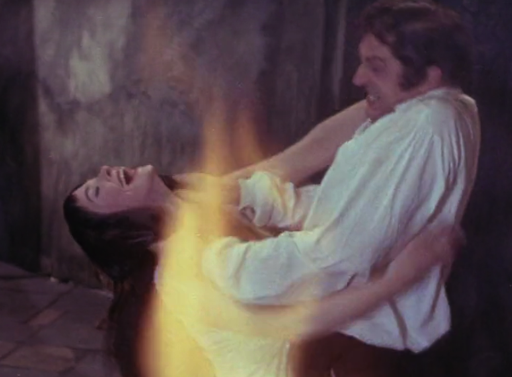
Introduction
The Terrorizing Visage
 How the muse is framed, frozen, fixed, fermented
How the muse is framed, frozen, fixed, fermented -
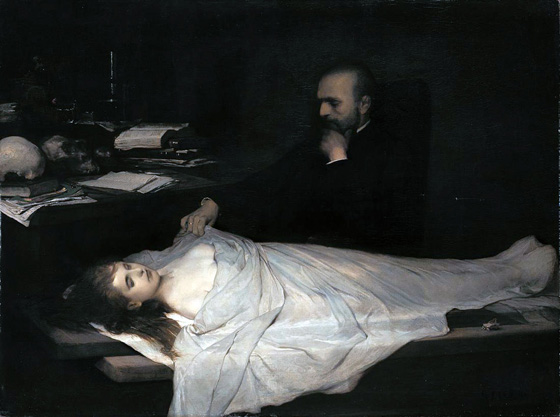
Chapter 1
The Illuminated Nymph
Completed chapter
 How the body is spotlit, highlighted, centralised, telescoped
How the body is spotlit, highlighted, centralised, telescoped
 Artists: Jean-Auguste Dominique Ingres, Gustav Courbet, Francisco Hayez, Alexandre Cabanel, William-Adolphe Bouguereau, John Collier, John Everett Millais, John Atkinson Grimshaw, Edward Burne-Jones, John William Waterhouse, Knut Ekwall, Edward John Poynter, Arnold Böcklin, Nils Blommér, Francis Danby, Hans Makart, Carlos Schwabe, Franz Stuck, Alfred Kubin, Max Ernst, Rene Magritte, Germaine Richier
Artists: Jean-Auguste Dominique Ingres, Gustav Courbet, Francisco Hayez, Alexandre Cabanel, William-Adolphe Bouguereau, John Collier, John Everett Millais, John Atkinson Grimshaw, Edward Burne-Jones, John William Waterhouse, Knut Ekwall, Edward John Poynter, Arnold Böcklin, Nils Blommér, Francis Danby, Hans Makart, Carlos Schwabe, Franz Stuck, Alfred Kubin, Max Ernst, Rene Magritte, Germaine Richier -
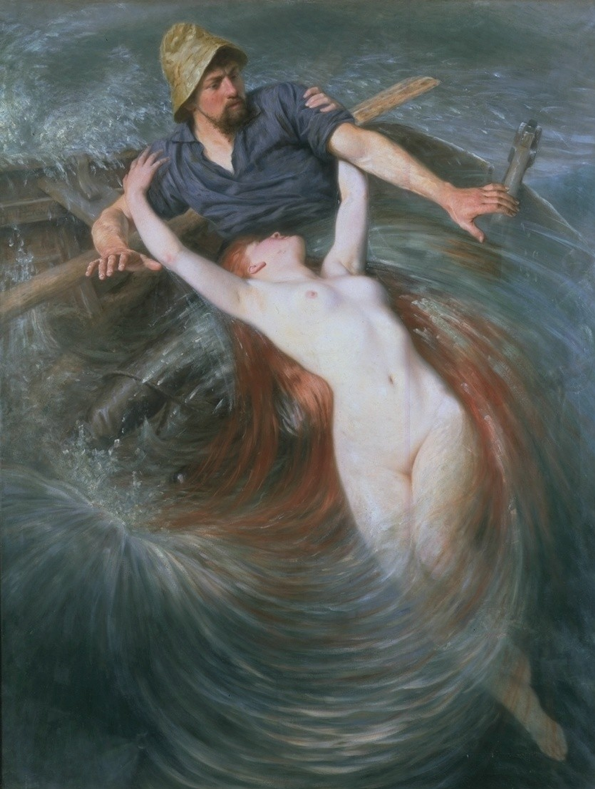
Chapter 2
The Lady In The Lake
Completed chapter
 How the muse titlates, lures, entraps, haunts
How the muse titlates, lures, entraps, haunts
 Artists: (Jean-Auguste Dominique Ingres, Gustave Courbet, Francesco Hayez, Alexandre Cabanel, William-Adolphe Bouguereau, John Collier, John Everett Millais, John Atkinson Grimshaw, Edward Burne-Jones, John William Waterhouse, Knut Ekwall, Edward John Poynter, Arnold Böcklin, Nils Blommér, Francis Danby, Hans Makart, Carlos Schwabe, Franz Stuck, Alfred Kubin, Max Ernst, Rene Magritte, Germaine Richier
Artists: (Jean-Auguste Dominique Ingres, Gustave Courbet, Francesco Hayez, Alexandre Cabanel, William-Adolphe Bouguereau, John Collier, John Everett Millais, John Atkinson Grimshaw, Edward Burne-Jones, John William Waterhouse, Knut Ekwall, Edward John Poynter, Arnold Böcklin, Nils Blommér, Francis Danby, Hans Makart, Carlos Schwabe, Franz Stuck, Alfred Kubin, Max Ernst, Rene Magritte, Germaine Richier -
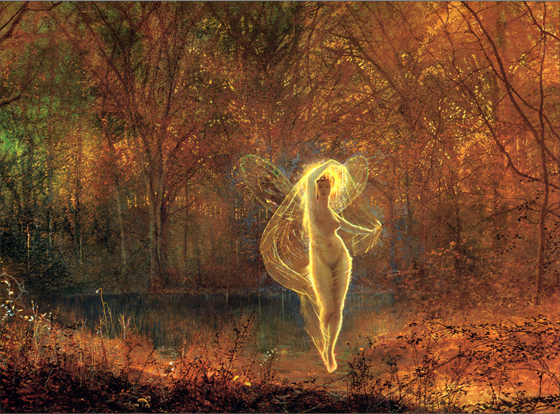
Chapter 3
The Morbid Forest
Completed chapter
 Where the body is left for dead, to be exposed, to decompose, to be discovered
Where the body is left for dead, to be exposed, to decompose, to be discovered
 Artists: Caspar David Freidrich, Arnold Böcklin, Nils Blommér, Leon Frederic, John Atkinson Grimshaw, Maximilian Lenz, Frederick McCubbin, John William Waterhouse, Albert Beck Wenzell, Odilon Redon, Hans Arp, Max Ernst, Marcel Duchamp, Ana Mendieta, Georg Baselitz, Paul McCarthy, Anne Geddes, Spencer Tunick, Chiho Aoshima, Are Mokkelbost
Artists: Caspar David Freidrich, Arnold Böcklin, Nils Blommér, Leon Frederic, John Atkinson Grimshaw, Maximilian Lenz, Frederick McCubbin, John William Waterhouse, Albert Beck Wenzell, Odilon Redon, Hans Arp, Max Ernst, Marcel Duchamp, Ana Mendieta, Georg Baselitz, Paul McCarthy, Anne Geddes, Spencer Tunick, Chiho Aoshima, Are Mokkelbost -
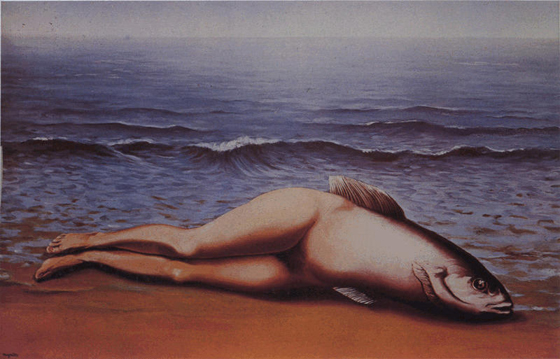
Chapter 4
The Sexualised Chimera
Completed chapter
 How the body is transmogrified, mutated, fused, collaged
How the body is transmogrified, mutated, fused, collaged
 Artists: Arnold Böcklin, Edward Burne-Jones, John Delville, Fernand Khnopff, Gustav Klimt, Franz von Stuck, Boleslas Biegas, Balthus, Rene Magritte, Victor Brauner, André Masson, Toyen, Ed Roth, H. R. Giger, Hajime Sorayama, Jake and Dinos Chapman, Miwa Yanagi
Artists: Arnold Böcklin, Edward Burne-Jones, John Delville, Fernand Khnopff, Gustav Klimt, Franz von Stuck, Boleslas Biegas, Balthus, Rene Magritte, Victor Brauner, André Masson, Toyen, Ed Roth, H. R. Giger, Hajime Sorayama, Jake and Dinos Chapman, Miwa Yanagi -
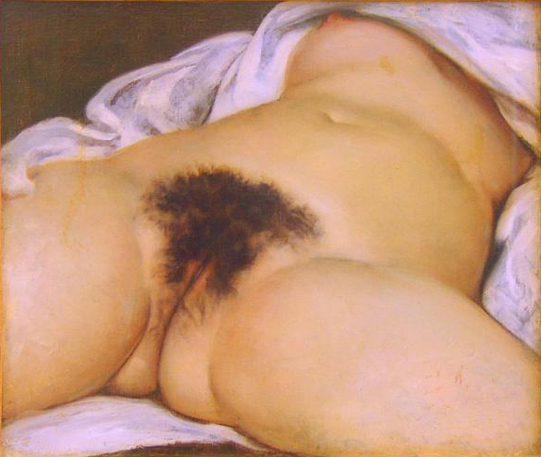
Chapter 5
The Hungry Vagina
Completed chapter
 How the body threatens, devastates, dessicates, devours
How the body threatens, devastates, dessicates, devours
 Artists: Jean Baptiste Greuze, Jean Antoine Houdon, Henry Singleton, Frederick Sandys, John Collier, Pierre Bonnard, Herbert James Draper, Gustave Courbet, Alfred Kubin, Marcel Duchamp, Man Ray, Otto Dix, André Masson, Roberto Matta, Hans Belmer, Lee Bontecou, Niki de Saint Phalle, Tom Wesselmann, Magdelena Abakanowicz, Valie Export
Artists: Jean Baptiste Greuze, Jean Antoine Houdon, Henry Singleton, Frederick Sandys, John Collier, Pierre Bonnard, Herbert James Draper, Gustave Courbet, Alfred Kubin, Marcel Duchamp, Man Ray, Otto Dix, André Masson, Roberto Matta, Hans Belmer, Lee Bontecou, Niki de Saint Phalle, Tom Wesselmann, Magdelena Abakanowicz, Valie Export -

Chapter 6
The Prostrate Christ
Completed chapter
 How the body is laid out, kept flat, left lying, made horizontal
How the body is laid out, kept flat, left lying, made horizontal
 Artists: Andrea Mantegna, Hans Holbein, Francisco De Zurbaran, Léon Frédéric, Arnold Böcklin, William Adolphe Bourgereau, William Etty, Luigi Gongaza Giuditti, Jean-Joseph Benjamin-Constant, John William Waterhouse, Leighton Frederick, Käthe Kollwitz, Francis Bacon, Balthus, Frida Kahlo, Hermann Nitsch, Lucien Freud, Gerhard Richter
Artists: Andrea Mantegna, Hans Holbein, Francisco De Zurbaran, Léon Frédéric, Arnold Böcklin, William Adolphe Bourgereau, William Etty, Luigi Gongaza Giuditti, Jean-Joseph Benjamin-Constant, John William Waterhouse, Leighton Frederick, Käthe Kollwitz, Francis Bacon, Balthus, Frida Kahlo, Hermann Nitsch, Lucien Freud, Gerhard Richter -
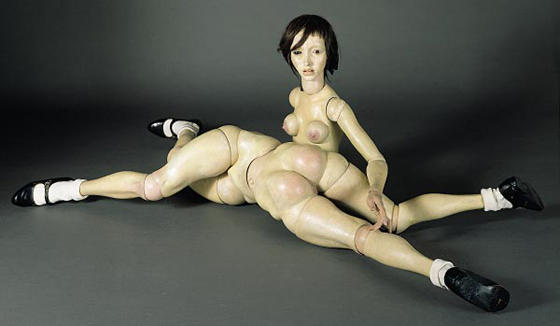
Chapter 7
The Living Doll
Completed chapter
 How the body is assembled, operated, utilised, staged
How the body is assembled, operated, utilised, staged
 Artists: François Boucher, John Gottfried Schadow, John Gibson, Hans Makart, Lawrence Alma-Tadema, Jean Leon Gerôme, Ernest Barrias, Lovis Corinth, Franz Stuck, Jiminez Aranda, Hans Bellmer, Gil Elvgren, Allen Jones, George Segal, John de Andrea, Duane Hanson, Peter Berlin, Cindy Sherman
Artists: François Boucher, John Gottfried Schadow, John Gibson, Hans Makart, Lawrence Alma-Tadema, Jean Leon Gerôme, Ernest Barrias, Lovis Corinth, Franz Stuck, Jiminez Aranda, Hans Bellmer, Gil Elvgren, Allen Jones, George Segal, John de Andrea, Duane Hanson, Peter Berlin, Cindy Sherman -
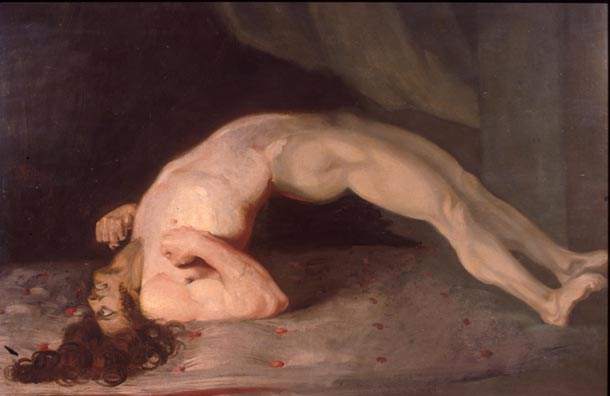
Chapter 8
The Disfigured Nude
Completed chapter
 How the body is repositioned, contorted, reshaped, reconstituted
How the body is repositioned, contorted, reshaped, reconstituted
 Artists: Bartholomeus Spranger, Charles Bell, Théodore Géricault, Auguste Rodin, Georges Daoud Corm, Marcel Duchamp, Umberto Boccioni, Otto Dix, Pablo Picasso, Alberto Giacometti, Rudolph Schlicter, Andre Kertesz, Dorothea Tanning, Willem de Kooning, Hans Arp, Francis Bacon, Peter Saul, Louise Bourgeois, Joel Peter-Witkin, Jenny Saville, Erwin Olaf
Artists: Bartholomeus Spranger, Charles Bell, Théodore Géricault, Auguste Rodin, Georges Daoud Corm, Marcel Duchamp, Umberto Boccioni, Otto Dix, Pablo Picasso, Alberto Giacometti, Rudolph Schlicter, Andre Kertesz, Dorothea Tanning, Willem de Kooning, Hans Arp, Francis Bacon, Peter Saul, Louise Bourgeois, Joel Peter-Witkin, Jenny Saville, Erwin Olaf -
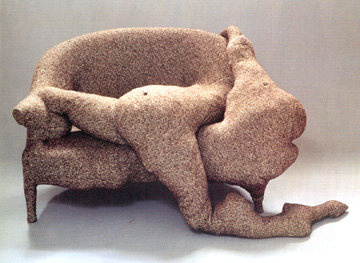
Chapter 9
The Unavoidable Biomorph
Completed chapter
 How the body resembles, is molded, is mimicked, distorts
How the body resembles, is molded, is mimicked, distorts
 Artists: Edgar Degas, Henri Matisse, Man Ray, Gaston Lachaise, Hans Bellmer, Brassai, Dora Maar, Hans Arp, Barbara Hepworth, Henry Moore, Francois Lunven, Louise Bourgeois, Dorothea Tanning, Huguette Caland, Jeff Koons, Sarah Lucas, Marc Quinn, Hideaki Kawashima, Anne Geddes
Artists: Edgar Degas, Henri Matisse, Man Ray, Gaston Lachaise, Hans Bellmer, Brassai, Dora Maar, Hans Arp, Barbara Hepworth, Henry Moore, Francois Lunven, Louise Bourgeois, Dorothea Tanning, Huguette Caland, Jeff Koons, Sarah Lucas, Marc Quinn, Hideaki Kawashima, Anne Geddes -
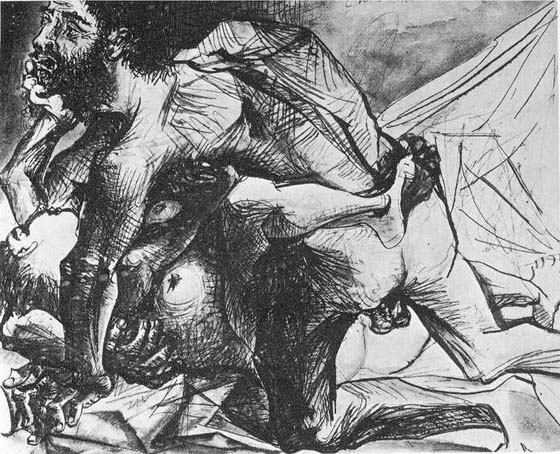
Chapter 10
The Impotent Rage
Completed chapter
 How the artist declares, condems, denounces, destroys
How the artist declares, condems, denounces, destroys
 Artists: Hans Baldung, Artemisia Gentileschi, Francisco De Goya, Augustus Leopold Egg, Albert von Keller, Emmanuel Fremmiet, Auguste Rodin, Jan Frans DeBoever, Francis Picabia, Egon Schiele, Pablo Picasso, André Masson, Jackson Pollock, George Grosz, Maria Martins, Yoko Ono, Otto Mühl, Vito Acconci
Artists: Hans Baldung, Artemisia Gentileschi, Francisco De Goya, Augustus Leopold Egg, Albert von Keller, Emmanuel Fremmiet, Auguste Rodin, Jan Frans DeBoever, Francis Picabia, Egon Schiele, Pablo Picasso, André Masson, Jackson Pollock, George Grosz, Maria Martins, Yoko Ono, Otto Mühl, Vito Acconci -
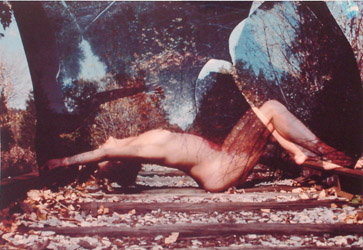
Chapter 11
The Destructive Tool
Completed chapter
 How the body is punctured, ruptured, penetrated, eviscerated
How the body is punctured, ruptured, penetrated, eviscerated
 Artists: Marcel Duchamp, Max Ernst, Alberto Giacometti, Alberto Burri, Lucio Fontana, Gordon Matta-Clarke, Jean-Paul Goude, Niki de Saint Phalle, Jean Tinguely, Chris Burden, Andy Warhol, William S. Burroughs, John Chamberlain, Gunnar Aagaard Andersen, Carolee Schneemann, Diego Velazquez (defaced), Michelangelo (defaced), Chris Offili (defaced)
Artists: Marcel Duchamp, Max Ernst, Alberto Giacometti, Alberto Burri, Lucio Fontana, Gordon Matta-Clarke, Jean-Paul Goude, Niki de Saint Phalle, Jean Tinguely, Chris Burden, Andy Warhol, William S. Burroughs, John Chamberlain, Gunnar Aagaard Andersen, Carolee Schneemann, Diego Velazquez (defaced), Michelangelo (defaced), Chris Offili (defaced) -
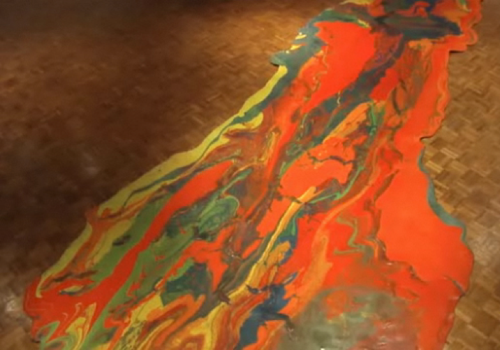
Chapter 12
The Creative Ejaculate
Completed chapter
 How the artist expresses, projects, expels, stains
How the artist expresses, projects, expels, stains
 Artists: Jackson Pollock, Alfred Otto Wolfgang Schulze, Bernard Requichot, Yves Klein, Cy Twombly, Hermann Nitsch, César Baldaccini, Lynda Benglis, Paul McCarthy, Dennis Oppenheim, Yoko Ono, Carolee, Scheemann, Vito Acconci, Andy Warhol, Ana Mendieta, Francis Bacon, Peter Saul, Takashi Murakami, Chris Burden
Artists: Jackson Pollock, Alfred Otto Wolfgang Schulze, Bernard Requichot, Yves Klein, Cy Twombly, Hermann Nitsch, César Baldaccini, Lynda Benglis, Paul McCarthy, Dennis Oppenheim, Yoko Ono, Carolee, Scheemann, Vito Acconci, Andy Warhol, Ana Mendieta, Francis Bacon, Peter Saul, Takashi Murakami, Chris Burden -
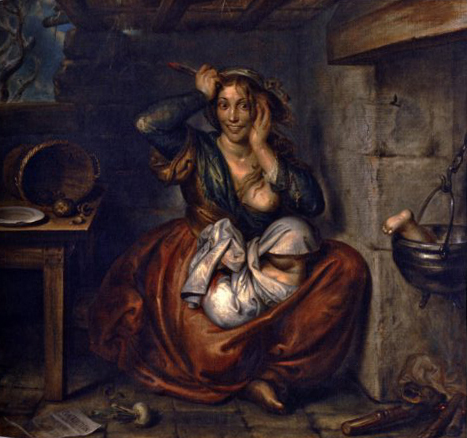
Chapter 13
The Crime Scene
Completed chapter
 Where both artist and body are documented, traced, incriminated, analysed
Where both artist and body are documented, traced, incriminated, analysed
 Artists: Thomas Couture, Jean-Joseph Weerts, Antoine Wiertz, Henri-Camille Danger, Edgar Degas, Walter Sickert, George Grosz, Otto Dix, Hyppolyte Bayard, Alphonse Bertillon, Paul Nougé, Pablo Picasso, Max Ernst, Iri & Toshi Maruki, Robert Rauschenberg, Salvador Dali, Duane Hanson, Cindy Sherman, Francis Bacon, Robert Polidori
Artists: Thomas Couture, Jean-Joseph Weerts, Antoine Wiertz, Henri-Camille Danger, Edgar Degas, Walter Sickert, George Grosz, Otto Dix, Hyppolyte Bayard, Alphonse Bertillon, Paul Nougé, Pablo Picasso, Max Ernst, Iri & Toshi Maruki, Robert Rauschenberg, Salvador Dali, Duane Hanson, Cindy Sherman, Francis Bacon, Robert Polidori -

Chapter 14
The Body of Evidence
Completed chapter
 What the body becomes, proves, states, encodes
What the body becomes, proves, states, encodes
 Artists: The Belvedere Torso, Peter Paul Reubens, Kusozu illustrations, Jacques-Fabien Gautier D'Agoty, Jan van Rymsdyk, Auguste Clésinger, Adolph Menzel, Thomas Eakins, Adolf Zeigler, Marcel Marien, Ivan Allbright, Marcel Duchamp, Andy Warhol, Alina Szapocznikow, Helmet Newton, George Segal, Jana Sterbak, Jenny Holzer, Ron Mueck, Eric Fischl, Fernando Botero
Artists: The Belvedere Torso, Peter Paul Reubens, Kusozu illustrations, Jacques-Fabien Gautier D'Agoty, Jan van Rymsdyk, Auguste Clésinger, Adolph Menzel, Thomas Eakins, Adolf Zeigler, Marcel Marien, Ivan Allbright, Marcel Duchamp, Andy Warhol, Alina Szapocznikow, Helmet Newton, George Segal, Jana Sterbak, Jenny Holzer, Ron Mueck, Eric Fischl, Fernando Botero -
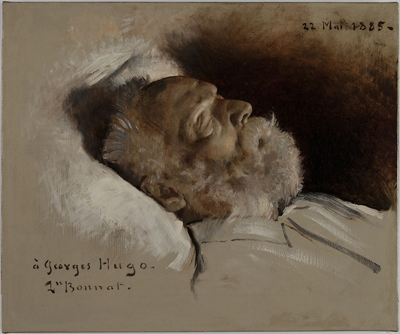
Chapter 15
The Mortician’s Mask
Completed chapter
 How the artist, muse and body appear, imprint, contain, resemble
How the artist, muse and body appear, imprint, contain, resemble
 Artists: Jacques-Louis David, Raymond Brasscassat, Emile Beau, Leon Bonnat, L’Inconnue de la Seine death masks, Paul Richer, Käthe Kollwitz, Otto Dix, Victor Brauner, Jean Fautrier, Frank Auerbach, Andy Warhol, Chuck Close, Ana Mendieta, Ed Gein, Joel-Peter Witkin, Frank Auerbach, The National Library of Medicine’s Visible Human Project, Marc Quinn, Jocelyn Wildenstein, Stan Winston, War President, Walter Schels, Marlene Dumas, Martin Schoeller
Artists: Jacques-Louis David, Raymond Brasscassat, Emile Beau, Leon Bonnat, L’Inconnue de la Seine death masks, Paul Richer, Käthe Kollwitz, Otto Dix, Victor Brauner, Jean Fautrier, Frank Auerbach, Andy Warhol, Chuck Close, Ana Mendieta, Ed Gein, Joel-Peter Witkin, Frank Auerbach, The National Library of Medicine’s Visible Human Project, Marc Quinn, Jocelyn Wildenstein, Stan Winston, War President, Walter Schels, Marlene Dumas, Martin Schoeller -
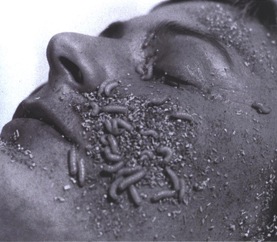
Chapter 16
The Inflicted Self
Completed chapter
 How the artist maims, marks, scarifies, mutilates the body
How the artist maims, marks, scarifies, mutilates the body
 Artists: Franz Xavier Messerschmidt, Gustave Courbet, Adrien Tournachon, Fred Holland Day, Adolfo Wildt, Basil Wolverton, Mary Barnes, Anita Steckel, Jeffrey Silvertone, Valie Export, Gina Pane, Chris Burden, Stelarc, Bob Flanagan, Marina Abramovic, Angelyne, Phoebe Glockner, Orlan, Paul McCarthy, Erwin Olaf, Arthur Elsenaar
Artists: Franz Xavier Messerschmidt, Gustave Courbet, Adrien Tournachon, Fred Holland Day, Adolfo Wildt, Basil Wolverton, Mary Barnes, Anita Steckel, Jeffrey Silvertone, Valie Export, Gina Pane, Chris Burden, Stelarc, Bob Flanagan, Marina Abramovic, Angelyne, Phoebe Glockner, Orlan, Paul McCarthy, Erwin Olaf, Arthur Elsenaar -
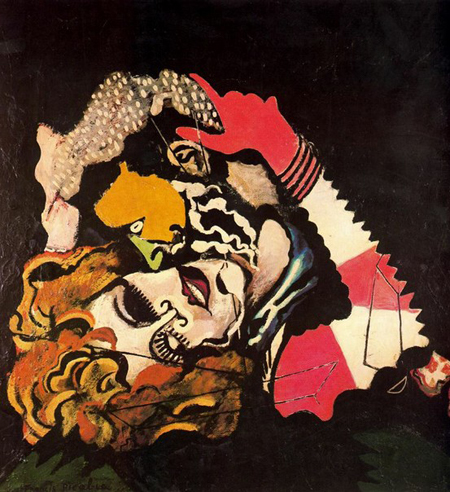
Chapter 17
The Slippage of Sex
Completed chapter
 How the body is gendered, differentiated, separated, socialised
How the body is gendered, differentiated, separated, socialised
 Artists: John Henry Fuseli, Edgar Degas, Auguste Rodin, Maximillian Lenz, Man Ray, Maria Martins, Luis Ricardo Falero, Jean Delville, Francis Picabia, Rene Magritte, Mimi Parent, Pablo Picasso, Martin van Maele, George Quaintance, Pierre Molinier, Louise Bourgeois, Hans Bellmer, Martha Rosler, Lynda Benglis, Tom of Finland, Robert Williams, John Currin
Artists: John Henry Fuseli, Edgar Degas, Auguste Rodin, Maximillian Lenz, Man Ray, Maria Martins, Luis Ricardo Falero, Jean Delville, Francis Picabia, Rene Magritte, Mimi Parent, Pablo Picasso, Martin van Maele, George Quaintance, Pierre Molinier, Louise Bourgeois, Hans Bellmer, Martha Rosler, Lynda Benglis, Tom of Finland, Robert Williams, John Currin -
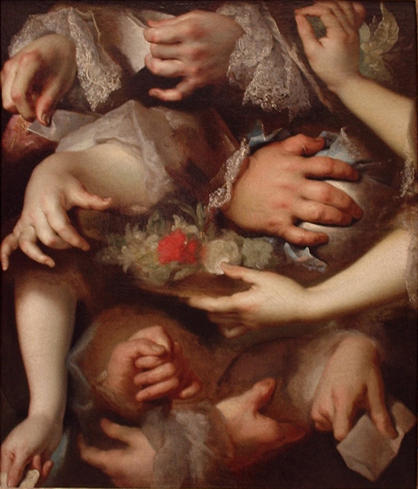
Chapter 18
The Abstracted Sensation
Completed chapter
 How the body is overcome, obliterated, dispersed, atomised
How the body is overcome, obliterated, dispersed, atomised
 Artists: Antonio Allegri, Giuseppe Arcimboldo, Nicolas De Largillière, Hans Makart, Hokusai, Camille Claudel, Jean Delville, Séraphine Soudbinine, Toyen, Hans Bellmer, Charles Sims, Virgil Finlay, Jackson Pollock, Jean Dubuffet, Magda Cordell, Erro, Vangel Naumovski, Lynda Benglis, Alex Grey, Angelo Musco
Artists: Antonio Allegri, Giuseppe Arcimboldo, Nicolas De Largillière, Hans Makart, Hokusai, Camille Claudel, Jean Delville, Séraphine Soudbinine, Toyen, Hans Bellmer, Charles Sims, Virgil Finlay, Jackson Pollock, Jean Dubuffet, Magda Cordell, Erro, Vangel Naumovski, Lynda Benglis, Alex Grey, Angelo Musco -
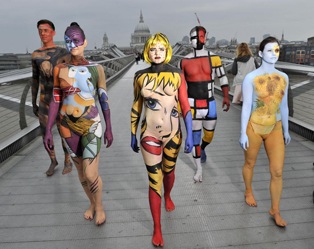
Conclusion
The Disappearing Nude
 How the body is absented, denied, buried, ghosted
How the body is absented, denied, buried, ghosted
